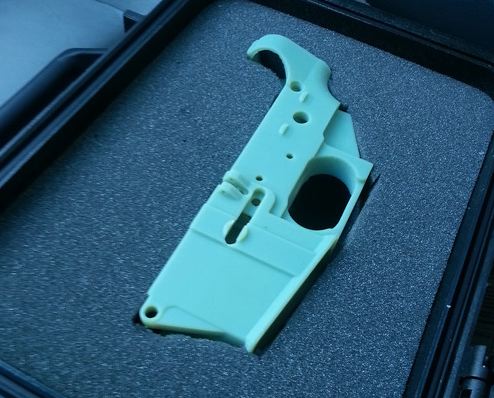The rise of 3D printing technology

When I first heard about the printer technology that could create things in 3D, I was pretty impressed. Sure, I didn't understand a thing about how it worked but I’d seen the results and it looked like a great upcoming innovation. Little did I think that two years ago we’d be doing some of the things we are now. 3D printers are now being used to generate things that are both potentially useful and potentially harmful. It is quickly looking to become one of those technologies that will change the face of our world, perhaps even more so than computers have done. The ability to make something out of virtually nothing can be applied in so many ways that even the most imaginative person could probably not grasp all the ways this will come to affect us.
One of the more minor applications of the 3D phenomenon is the 3D pen. It’s not really practical enough to change the way we do things, it’s more of an artistic development. What is essentially a glorified hot-glue gun can be used to “draw” things in both the second and third dimension. This article talks about it a little more in detail, but the 3Doodler is currently a kickstarter project that people can buy into if they wish. They've already reached they goal, so the pens are to be manufactured and shipped in November of this year.
The next development I discovered is one that’s not quite as artistic. It does, in fact, have the extreme potential to become quite destructive. One company has demonstrated that they can manufacture gun parts using the 3D printer. The one they made was a rifle receiver for an AR-15 and they showed that it continues to work despite the stresses of firing hundreds of rounds of ammunition. And people can jump online and get plans for this part if they so choose.
This naturally leads to the question of whether people will soon be able to print up entire weapons, piece by piece, and assemble them at home. All you need is an Internet connection, a reliable torrent distributing the printing plans under the radar and a little know-how on how to put everything together and you’ve got yourself a machine gun. The technology hasn’t quite reached that point yet, but you can bet the military will be looking to develop this capability has soon as possible, which will lead to citizens (and potentially hostile armies or individuals) getting the ability to do it shortly thereafter.

As the article aptly points out, the war on gun control may be a moot point if anyone and everyone can simply buy a 3D printer and make whatever weapons they choose. And as the technology improves and people put together better plans, the types of weapons that can be manufactured in the comfort of your own home will increase. A scary thought, to say the least.
At least some of the potential projects revolving around 3D printers are for the better, however. Two other achievements I came across involve the printing of a 3D prosthetic ear replacement and a 3D jaw replacement. That’s right, the world of 3D printing crosses over into the medical field as well.
The ear actually used human cells in the printing process and these cells were shown to begin growing their own cartilage to replace the 3D printed collagen. This is a great way to help people with physical ear problems, although it could degenerate into being just a fancy way to get some plastic surgery. Either way, it’s a remarkable breakthrough with the 3D technology, and what scientists did with the ear is easily translatable to other cartilage-based body parts, such as noses or joints. 3D joint replacement using your own body’s cells? Athletes everywhere are rejoicing at the prospect.
With the jaw, it was a little different. The replacement was manufactured using metal compounds - titanium powder to be exact. It did, however, end up looking almost exactly like the original jaw and the patient had restored functions in all areas normally associated with the jaw.
The ramifications of such technology can be amazing, or possible deadly. Depending on how complex the 3D printed items get, we could create anything from simple replacement parts to fully functional mechanical devices. I wonder too whether we could ever get to the point where we could create living things, such as a 3D printed virus. Size seems the only true limitation, although if a company could manufacture one giant 3D printer and use it as the forefront to their automobile assembly line, they’d probably think the investment well worth it.
Then there’s the question of how such technology could affect the economy. If people can make whatever they want at home, simply by buying 3D printer “ink,” what would happen to the manufacturing industry? The potential for 3D greatness is only equaled by the potential for massive disruption in the world. If we learned to use this technology peacefully, however, it could prove to be the single greatest achievement in the history of mankind.
3D Printing photo courtesy of Michaela Mastikova via Wikicommons
3D Gun Part photo courtesy of theblaze.com

2 comments